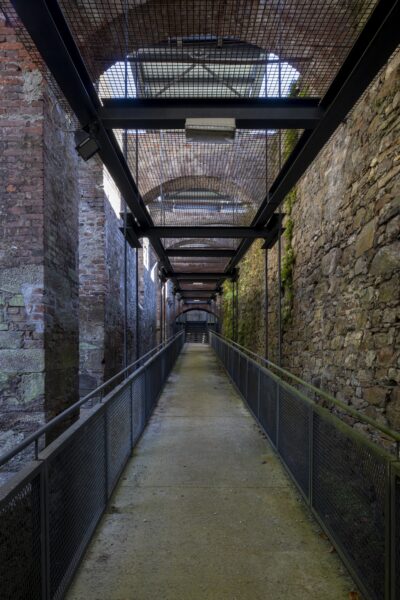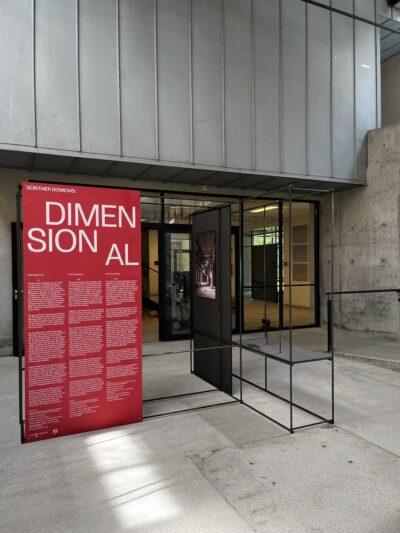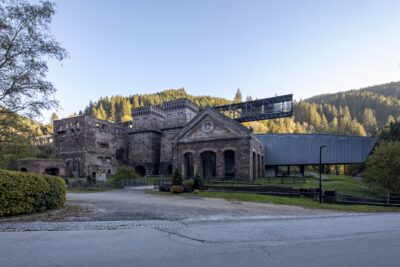Carinthian Regional Exhibition Space, Heft in Hüttenberg, 1993–1995

For the regional exhibition about mining Günther Domenig planned and built an exhibition building in reaction to a mine protected by listed status. The central design element is formed by corridors arranged in stacks, inspired by the underground tunnel system for ore mining in Knappenberg, together with functional spaces such as an auditorium and a café. The construction of the building met with difficult political conditions and protests, which almost resulted in work being discontinued and forced a scaling down of the project.
The historical building itself has been transformed into an exhibit. Steel beams both pierce through and jut out far beyond the existing building. Without compromising in his architectural response, Domenig distances the new construction from the old buildings and seeks a clear and independent contemporary signature. The Heft project laid the foundations for one of his most important works: his intervention at the former Nazi Party Rally Grounds in Nuremberg.
Created for the Carinthian Regional Exhibition between 1993 and 1995, both an exhibit and the setting for a major show, today the Heft building is considered one of Domenig’s key works and demonstrates the adroit handling of historical building fabric that would be essential for his later work on the Documentation Center Nazi Party Rally Grounds in Nuremberg. Over several years the vacancy of the building has led to a unique setting of sculptural-architectural overlays and overgrowth created by nature, now also accessible to visitors. Installations and interventions by artists further highlight the building’s visual effect. It also serves as a space of action and events for students from various art and architecture universities (Carinthian University of Applied Sciences Spittal/Drau, University of Applied Arts Vienna, University Innsbruck, etc.).
Central themes here are the location’s spatialarchitectural qualities, together with the meaning of emptiness and nothingness. The building has stood abandoned for over ten years. The negative volumes of the empty blast furnaces, the walls of the former iron ore plant and the typology of Domenig’s bridge-like extension engage this debate.
Another defining feature of the Heft is the contrast between the two forms of design to be found there.
The historic ironworks is huge and solid, with thick brick walls whose design stems from the topographical conditions and the functional requirements of industrial iron ore mining and processing. By contrast, Domenig’s extension is a light steel framework, transparent and airy. Its form comes less from function and more from the architectural concept. If we follow this movement away from functional, heavy material and towards design-based lightness, the question of the third – future – architectural layer arises: intangible, virtual and digital?
The years of abandonment have resulted in a unique environment of sculptural-architectural intersections, intensified by the encroaching vegetation. The slightly dystopian and decidedly post-anthropocentric atmosphere at the site has an imposing spatial and aesthetic quality that should be preserved.
The municipality of Hüttenberg once had the second largest iron smelting plant in Austria. Since 1978 it has suffered from the closure of the mine and blast furnaces and related industry. Alongside its historical use and social aspects, the political history of this site will also be examined, and here especially the opposition Günther Domenig encountered from local politicians during the construction for the regional exhibition. The buildings at the Heft are emblematic of today’s unused architecture from the 1980s and 1990s, of which there are a number in Carinthia. Their example can be used as a starting point to imagine and discuss what options there are for abandoned buildings whose complete renovation appears unaffordable.






